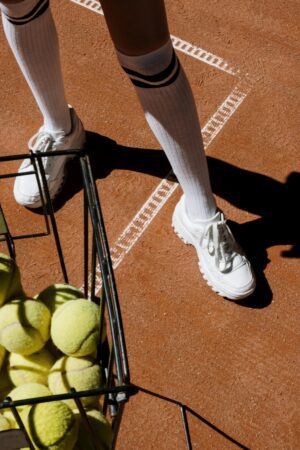Are Tennis Balls Green or Yellow? The Great Debate
If you’ve watched or played tennis, you’ve probably noticed the bright, neon color of tennis balls. But here’s the million-dollar question that’s sparked debate among fans, players, and even casual observers for years—are tennis balls green or yellow?
Before you start doubting your own vision (or picking fights with friends), let’s break this colorful conundrum down. Spoiler alert: the answer isn’t as black-and-white—or shall we say green or yellow—as you might think!

The Official Color of Tennis Balls
According to the International Tennis Federation (ITF), tennis balls are officially “optic yellow.” This was decided back in 1972 to make the balls more visible for players and spectators, especially as tennis was becoming a TV-friendly sport. Under bright stadium lights or in natural sunlight, the vibrant optic yellow glows brilliantly, helping players track its flight and spin.
However, here’s where it gets tricky. While the ITF defines tennis balls as yellow, not everyone perceives them that way. For some people, that same ball looks green.
Why Do Some People See Green Instead of Yellow?
The debate over a tennis ball’s color is a fascinating example of how color perception isn’t universal. Here’s why opinions vary:
1. How Our Eyes See Color
The human eye is equipped with color receptors called cones that help us see red, blue, and green light. When a color falls between these primary wavelengths—like optic yellow does—it can trigger overlap in these cones. For some, optic yellow leans more into the green spectrum, while others process it as closer to yellow.
2. Lighting Makes a Difference
Lighting can play a huge role in how we perceive colors. Under natural sunlight, tennis balls often look more vividly yellow. Under artificial light—even the bright lights of a tennis stadium—the green tones might stand out, making the ball appear greener to some.
3. Individual Differences
Each person’s vision is uniquely tuned. Factors like age, genetics, and even past experiences can influence how colors are processed in your brain. What looks greenish-yellow to you might look straight-up yellow to someone else. It’s kind of like the infamous “blue and black vs. white and gold dress” debate all over again!
Science Meets Psychology in the Color Debate
The fascinating thing about this debate is how it blends both science and psychology. Our brains rely not just on our eyes but also on context and interpretation when it comes to making sense of color. For example, when we see tennis balls alongside green grass courts, our brains might “correct” the color slightly, leaning toward green. On the other hand, when viewing them against neutral backgrounds, we might perceive more of the yellow tones.
What Color Do YOU See?
Despite the ITF’s official stance, people seem split down the middle. The next time you find yourself watching a tennis match or picking up a ball, pay attention. What do you see—a zesty yellow or a bold green?
Join the Debate!
Color perception is a quirky and fun topic to explore—so why not join in? What’s your take—are tennis balls green, yellow, or something in between? Share your thoughts in the comments or with friends over social media. Who knows, you might serve up the winning opinion in this age-old debate! 🎾
